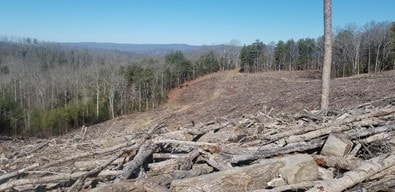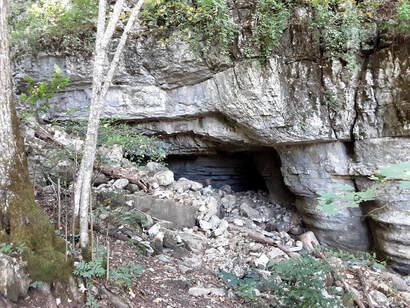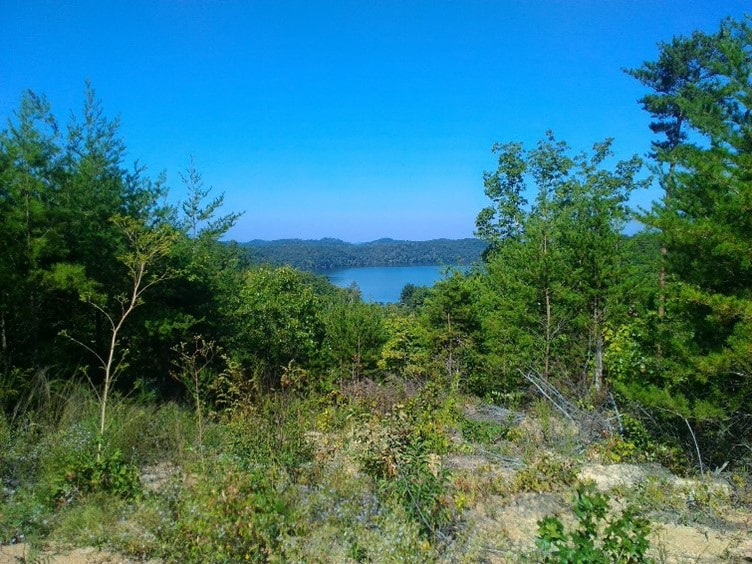Accomplishments
2020 has certainly been one of new challenges for Tennessee Heartwood, with places sometimes closed and communications with public officials sometimes spotty. However, we can say that we met our goals for the year through perseverance and adjusting to COVID realities. Below are our accomplishments for the year. We’ve embedded links for those who may want to see in detail our work and the issues.
- Revived activism on Tennessee State Forests. It has been two decades since serious conservation advocacy has happened on the state forest timber sale program. We have spent the last couple of years getting a grip on state forest logging on our 14 forests, visiting timber sale proposals, before, during, and after logging, as well as evaluating the effects of timber sales on forest regeneration over time. Our board decided that a thoughtful rollout of our work was in order, with an initial reaching out to Tennessee State Forester David Arnold at the Tennessee Forestry Commission’s headquarters in Nashville with Scott Banbury of the Tennessee Chapter of the Sierra Club. We gave a visual presentation profiling the issues with five forests, including logging practices, erosion, and a failure of cut stands to regenerate to its original composition. We had a good informal discussion on how the agency can look at other approaches to forest management and promote biodiversity.
Clearcutting at Chuck Swan State Forest- Union County
This fall we met representatives of the Old Growth Forest Network to partner on finding and inventorying old growth forest remnants across the state, with the goal of a representative stand for each county. So far we have found and written up on stands in Hamilton, Franklin, and Marion counties, and are currently exploring potential sites in Polk, Greene, and Union county- spotlighting stands in places as diverse as Lookout Mountain National Battlefield and Thumping Dick Hollow at Sewanee/University of the South.
- Continued watchdogging the Land Between the Lakes National Recreation Area (LBL). This winter, the Coalition for the Preservation of the Land Between the Lakes contacted us about some concerning talk from the Forest Service about possible logging-based actions after a minor cold snap in February, with the agency claiming that a possible salvage logging may be needed due to a claim of “oak decline” happening because of what was nothing more than a late frost. While the agency has undertaken numerous reforms in recent years, there are still occasionally very ecologically unsound claims such as this to justify logging. The Coalition requested assistance in addressing this by undertaking field visits to assess and document this supposed “damage” to the forest. We also hired a credentialed botanist to assist us in our assessment. Needless to say, our report of our field visit to the agency showed this rather ordinary weather event to be of no cause for alarm, and after publicizing our findings to locals in the area, the talk of emergency actions by the agency was dropped. While such claims by overzealous rangers may seem silly, it is important that they be addressed by the public to prevent them from becoming policy. Watchdogging works.
- “Social Distanced” Outings at the Land Between the Lakes. One of our goals for the LBL is simply celebrating the great biodiversity, history, and recreation opportunities there. We have been planning to have a weekend extravaganza that mixed recreation, environmental education, and history since last year. Of course, COVID concerns required that we delay and reorganize our planned event. We decided on a Labor Day weekend event that would combine two activities where a limited number of people could participate while reducing the chance of COVID transmission: a canoeing through the coves around Kentucky Lake (that’s pretty distant), and an interpretive hike with Tennessee State Naturalist Randy Hedgepath in open habitats where people could remain spread out while learning about the ecology of the area. We also found on the Kentucky side of the LBL what may be the new state champion largest black willow tree! (waiting for confirmation from the state). The event was a great success, and a reporter with Kentucky Public Radio joined us to profile the LBL and “alternative” forms of recreation during COVID. We plan to make this an annual event that covers both the Tennessee and Kentucky sides of the LBL.
- Monitoring timber projects in the Cherokee National Forest. As National Forests transition under new federal regulations, addressing the Forest Service’s timber sale programs. The Forest Service is moving to larger projects with varying degrees of public participation opportunities. One such project in the Cherokee National Forest “Restoration of Dry Forest Communities in the South Zone” is ongoing, with several analysis areas. The newest area being studied is the Unicoi/Coker Creek area, containing several thousand acres of varying terrain, and includes scenic Buck Bald and Coker Creek, along with a section of the Benton MacKaye Trail. Extensive logging proposed, with the project in early development
- Finding and Gaining Recognition for remaining Old Growth forest stands in the state. Old Growth Forest protection is one of our cornerstone goals. We have been exploring some potential hotspots in the south Cherokee National Forest at the Big Frog Wilderness, including a black cherry-hickory- white oak forest community that has never been inventoried. We will be teaming up with botanists this coming year to explore and inventory these sites.
This fall we met representatives of the Old Growth Forest Network to partner on finding and inventorying old growth forest remnants across the state, with the goal of a representative stand for each county. So far we have found and written up on stands in Hamilton, Franklin, and Marion counties, and are currently exploring potential sites in Polk, Greene, and Union county- spotlighting stands in places as diverse as Lookout Mountain National Battlefield and Thumping Dick Hollow at Sewanee/University of the South.
- Promoting Rare and Underrepresented Forest Communities. Since 2016, we have added a focus on promoting rare and underrepresented forest communities. For 2020, we focused on the Little Toqua area in the Cherokee National Forest. The Little Toqua parcel, an area of 557 acres, is a recovering second-growth forest that includes a very rare lowland table mountain pine-blackjack oak community. Tennessee Heartwood surveyed this area after the Forest Service announced its probable purchase from private ownership. We made a vigorous recommendation to the agency to pursue the purchase in the fall of 2018 and took a botanist from the Southern Grasslands Initiative to give it a more rigorous look in January, finding that Little Toqua is indeed a special place. Using the expertise of SGI botanist Zack Irich, we teamed up to prepare a report of our initial survey for the agency. While Southern Appalachian forest communities have had extensive research, transitional Ridge-and-Valley communities like Little Toqua have been often little-studied. The Forest Service is often stretched thin in allocating personnel and resources to get a full picture of the biodiversity of its lands and we are happy to help in bringing more attention to these lesser-known forest communities.
- Changes to National Forest Regulations in NEPA. The National Environmental Policy Act (NEPA) is the cornerstone of how our National Forests are managed. Unfortunately, radical changes to both the way national forests are managed and the public’s right to have a voice on that management are underway. Tennessee Heartwood was one of the early advocates to protect our NEPA rights, sounding the alarm as early as 2018 and participating in agency roundtables during the process. We also built a citizen’s guide to the proposed NEPA rule changes when public comment was on and organized protest in Atlanta where the Forest Service’s regional headquarters is located. While the rule has been recently released, we are still actively involved in keeping up the opposition. This included providing consultation and assistance with the Sierra Club seeking a way forward in their response to this dramatic change in National Forest policy.


